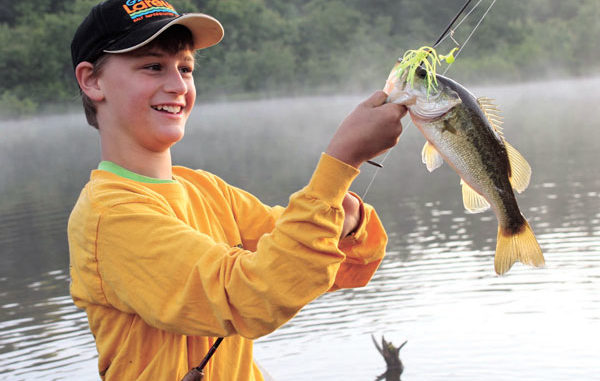
Operated with anglers in mind, SCDNR-managed lakes combine easy access and excellent opportunities to catch fish.
Big things really do come in small packages — sometimes. Any fisherman who doubts that needs only to look at the S.C. Department of Natural Resources’ “State Managed Lakes” program. Nineteen different lakes, most of which cover less than 100 acres, collectively present a tremendous amount of fishing opportunity to South Carolina fishermen.
The lakes, which the SCDNR owns or leases, are intensively managed specifically for fishing. In addition to working to create the best possible fisheries within each lake, the department enhances opportunities for anglers to fish by clearing banks for access and maintaining and creating facilities such as boat ramps, fishing piers, parking lots and restrooms.
Some of the lakes lend themselves better to intensive management than do others, according to Elizabeth Osier, Region II fisheries coordinator for the SCDNR, “but they all offer a place to wet your line, enjoy the outdoors, view wildlife and get away from the every-day stresses of life,” she said.
The department limes and fertilizes some lakes in order to maximize productivity, along with strategically stocking sportfish and carefully monitoring baitfish and sportfish populations. Although each lake is unique, popular species in the most include largemouth bass, bluegill, redear sunfish (shellcrackers) and channel catfish. A few also produce big blue catfish or offer opportunities to fish for crappie.
The department also creates and maintains fish attractors, which concentrate fish for the fishermen, according to Dan Rankin, SCDNR fisheries coordinator for Region I, who said. “They are put in place for the sake of fish concentration and are good spots to fish.”
Like the fish attractors, locations of most lakes in the program have been strategically chosen. Although exceptions do exist, the bulk are in areas of the state where anglers do not have convenient access to major reservoirs.
“The purpose of the program was to provide the public with flat-water fishing opportunities near population centers,” Osier said.
Many are located in the upper Piedmont and Pee Dee regions, with pods of lakes in areas that lack major reservoirs. A few others are in the Lowcountry.
Rankin pointed toward Lake John D. Long in Union County and Star Fort Pond in Greenwood County as two of the best stat-managed lakes in his region. Both are fertilized, highly productive and provide great access to excellent fishing.
Star Fort Pond is fairly small, covering just 22 acres, and it looks a lot like a farm pond, with mostly grassy banks and very good shoreline access. The combination of easy access and an outstanding panfish population make Star Fort Pond an extremely popular bank-fishing destination. Boating is permitted (electric motors only), but most anglers fish from the bank.
“Although there are plenty of bass in the lake, a lack of woody cover and the high number of bank-fishermen might make this lake a little less appealing than some others for an angler who wants to bass-fish from a boat,” Rankin said.
The panfish population includes a mix of bluegill, redear sunfish and crappie. It’s a well-balanced fish population, with a good mix of numbers and quality for all the panfish species. The SCDNR keeps the lake somewhat “bass crowded” to help keep the crappie population from getting out of control and stunted in growth. An angler who walks the banks and casts a small jig or spinner is apt to catch a nice mix of bream, crappie and bass. However, most anglers opt for more stationary approaches, fishing crickets or worms for bream or jigs for crappie.
A couple of important planning notes for Star Fort Pond: the lake is only open on Wednesdays, Saturdays and Sundays from April 1 through Nov. 1, and live minnows may not be used as bait.
Lake Long, at 80 acres, is nearly four times the size of Star Fort Pond. It offers a good mix of cleared and wooded banks. The cleared banks provide plentiful shoreline fishing access, but the wooded banks result in far more cover in the water and better areas to work from a boat, whether an angler opts to target bream or bass.
“There are a lot of bass in the lake, but most of them are in the half-pound to 1½-pound range,” Rankin said. “It is a great place to go to catch plenty of fish, but not necessarily for big bass.”
Sunfish are a different story. The bluegills — and especially the shellcrackers — grow big in Lake Long. Abundant bass keep sunfish numbers in check, and those that survive grow quickly in the fertile environment. In recent years, the SCDNR has actually been stocking “Phase II” fingerling bluegill, which are almost of harvestable size at the time of stocking, during the fall to boost numbers for fishermen.
“We have seen substantial returns from those stockings,” Rankin said. “The fish we stock are large enough that not many get eaten by the lake’s smaller bass.”
In her region, Osier brags on Dargan’s Pond, which covers 50 acres in Darlington County.
“My favorite for wildlife viewing and beauty is Dargan’s Pond,” Osier said. “There is the potential to harvest some nice-sized bass and crappie, but it is a blackwater system, so the productivity is not high.”
Anglers who fish Dargan’s Pond generally enjoy the best success among the cypress trees in the upper end of the lake.
“We’ve heard reports of some really big bass coming out of that part,” Osier said. “I also think that is the prettiest and most interesting part of the lake.”
Osier ranked Lancaster Reservoir, which covers 62 acres in Lancaster County, as the best overall bass lake in Region II, noting that the lakes offers good vegetation for anglers to fish and produces some very large fish.
“Our electrofishing surveys have produced some large fish, and we’ve heard accounts of people catching them too,” she said.
For bream fishing, Osier especially likes Mountain Lake No. 1, the larger of two lakes on the same property in Chester County. The other, Mountain Lake No. 2, is being renovated and is currently closed to fishing. Mountain Lake No. 1 actually benefitted from the project because biologists moved several large bluegill and redear sunfish there from No. 2 at the beginning of the renovation project.
Paul Wallace Lake, one of the largest lakes in the program at 300 acres, also serves up some of the largest fish of any of the managed lakes. Although the Marlboro County lake has management problems, it is popular for blue catfish, and the blues grow to big sizes.
“They were stocked for years and years, and I think they got stockpiled,” Osier said. “We have not done a catfish survey specifically, but we see lots of juveniles during electrofishing surveys, and I’ve heard from fishermen that they catch quite a few.”
Lake Edgar Brown in the town of Barnwell is likewise a hotspot for catfish, with both channel cats and blues — including some big blues — in the mix. Lake Brown has some of the best shoreline access in the program, and boatless anglers enjoy good access to some of the best catfishing.
South Carolina’s managed lakes vary enormously in character and in their specific offerings to anglers, but each has some unique virtue, and all are managed by the SCDNR to provide the best possible fishing opportunities. Summer is prime time for South Carolina anglers to explore these lakes.

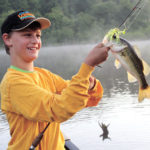
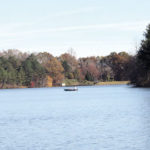
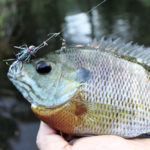
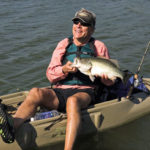
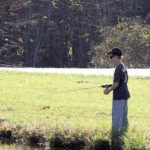


Be the first to comment